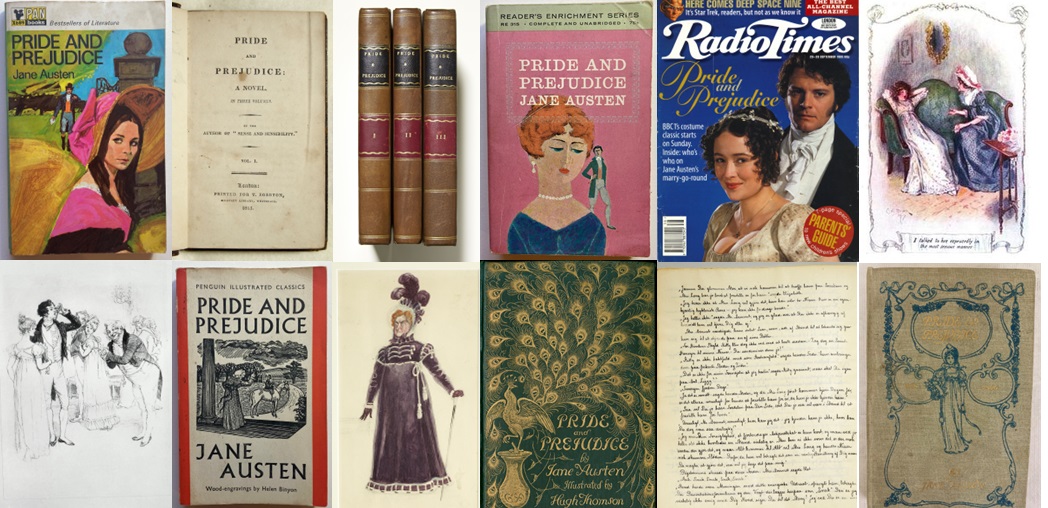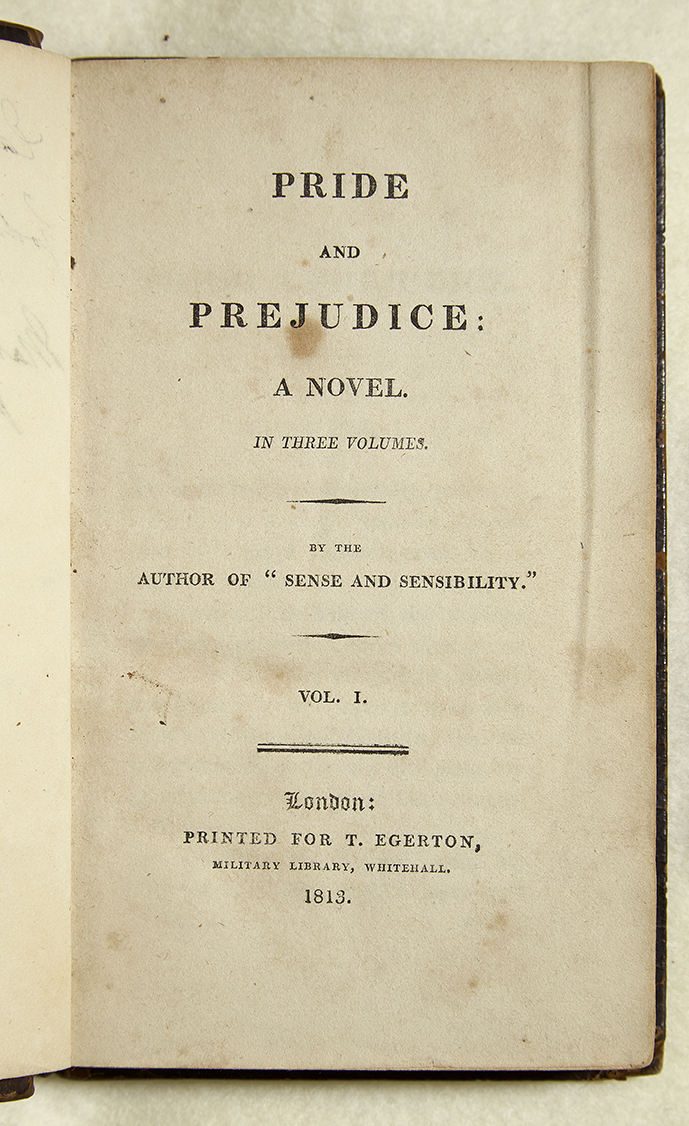Publication
Jane’s first publisher was Thomas Egerton, who ran a ‘Military Library’ in Whitehall. It is likely she secured this connection through Henry’s connections as a militia officer and army agent.
Because she was an unknown writer, Egerton had published Sense and Sensibility in 1811 on commission, which meant that Jane herself took all the financial risk. When S&S proved a success, Egerton agreed to publish Pride and Prejudice at his own risk, by purchasing the copyright. Jane wrote to Martha Lloyd:
‘P. & P. is sold.─Egerton gives £110 for it.─I would rather have had £150, but we could not both be pleased, & I am not at all surprised that he should not chuse to hazard, so much.’
The first edition (possibly around 1500 copies) sold out quickly, followed by a second edition later that year and a third in 1817. Since Egerton had purchased the copyright, he profited from these sales but Jane did not.
Building on her previous success, the title page described the novel as being ‘By the Author of “Sense & Sensibility”’. We don’t know why she published anonymously; perhaps she simply valued her personal privacy. It was an open secret, however, amongst her family and some friends that she was the author, not least because her brothers could not resist telling acquaintances about their successful sister.
OBJECT: First edition of Pride and Prejudice
Published by Thomas Egerton, London, 1813
The first edition of Pride and Prejudice is thought to have consisted of around 1500 copies, and was priced at 18 shillings for the three volume set. This copy is particularly special, as it was one of Jane’s own presentation copies, distributed to family and friends.
This copy was sent to Jane’s brother, Edward Knight. He had a full set of all Jane’s novels in his library at Godmersham Park, his estate in Kent; today they are known as the Godmersham Park set. The complete set is bound in brown leather, with black and maroon banded spine. The original trade binding would have been paper boards. It was usual for the owner to rebind an edition in their own bindings, possibly to match other books in their library.



